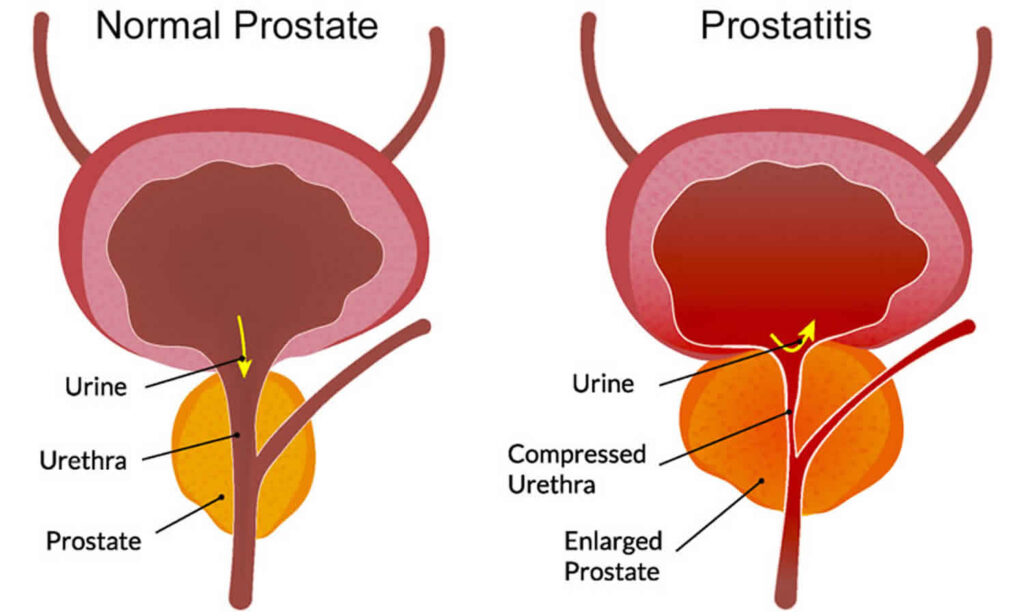Prostatitis, a prevalent medical condition that affects the prostate gland, can be highly distressing and disrupt an individual’s daily life. In this comprehensive article, we aim to provide an in-depth overview of prostatitis, encompassing its definition, treatment modalities, and the diverse range of types it encompasses.
Prostatitis arises from the inflammation of the prostate gland, triggered by a multitude of factors including bacterial infection, non-bacterial inflammation, or even an autoimmune response.
The treatment of prostatitis is contingent upon identifying the underlying cause and typically involves a combination of approaches. In instances where a bacterial infection is confirmed, targeted antibiotics are commonly prescribed to combat the specific bacteria responsible for the inflammation. Additionally, nonsteroidal anti-inflammatory drugs (NSAIDs) may be recommended to alleviate pain and mitigate inflammation.
Prostatitis manifests in distinct types, each characterized by unique attributes necessitating specific treatment considerations:
- Acute Bacterial Prostatitis: This type typically emerges abruptly as a result of a bacterial infection. Its symptoms are severe, encompassing high fever, chills, and intense pain in the lower abdomen or back. Urgent medical attention is crucial to avert potential complications, and the standard treatment involves a prescribed course of antibiotics.
- Chronic Bacterial Prostatitis: Distinguished by recurrent occurrences of bacterial infections, this variant of prostatitis encompasses the presence of persistent inflammation. While the symptoms typically manifest with less intensity in comparison to acute bacterial prostatitis, they can persist over an extended period. Addressing this condition necessitates an extensive regimen of antibiotics aimed at eradicating the bacteria, coupled with additional therapeutic approaches to effectively address the accompanying symptoms.
- Chronic Prostatitis/Chronic Pelvic Pain Syndrome (CP/CPPS): Representing the lion’s share of prostatitis cases, this prevailing form stands out with its enduring pelvic pain and uneasiness, frequently accompanied by urinary manifestations. The exact etiology of this ailment remains elusive, posing hurdles in the development of a successful therapeutic plan. Diverse methodologies encompassing analgesic medications, physical therapy, and stress-relief techniques can be implemented to ameliorate symptoms and elevate the overall well-being of individuals experiencing this condition.


